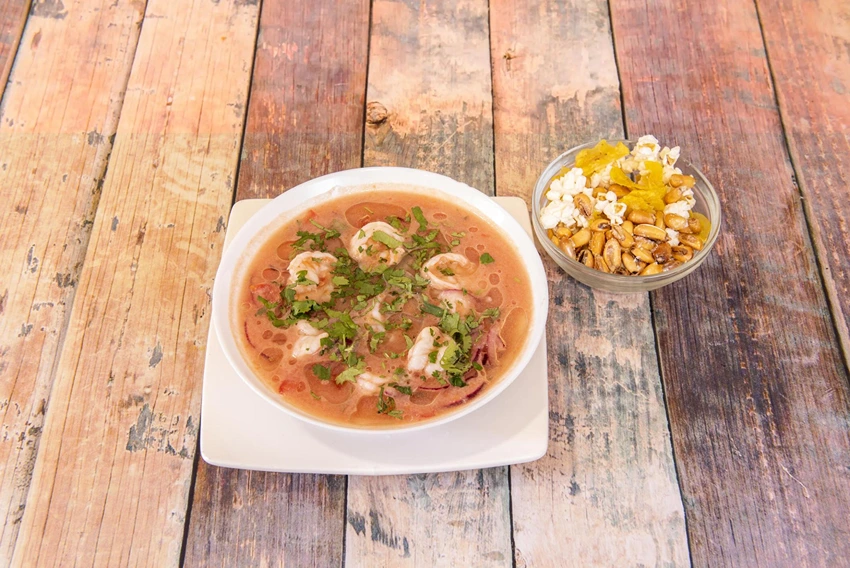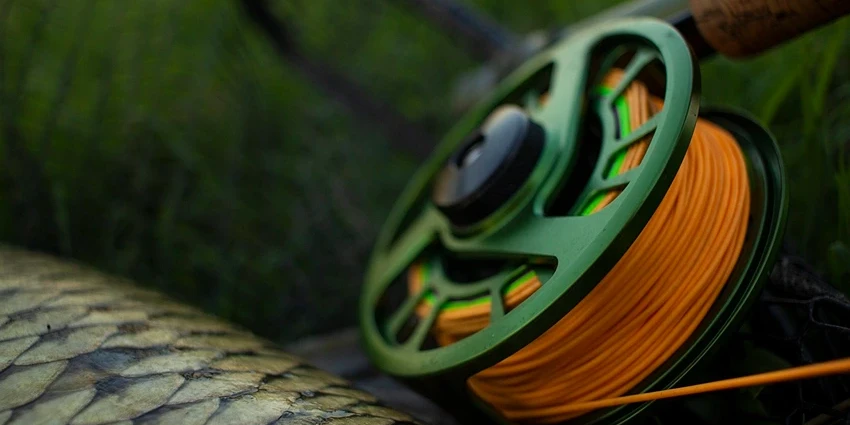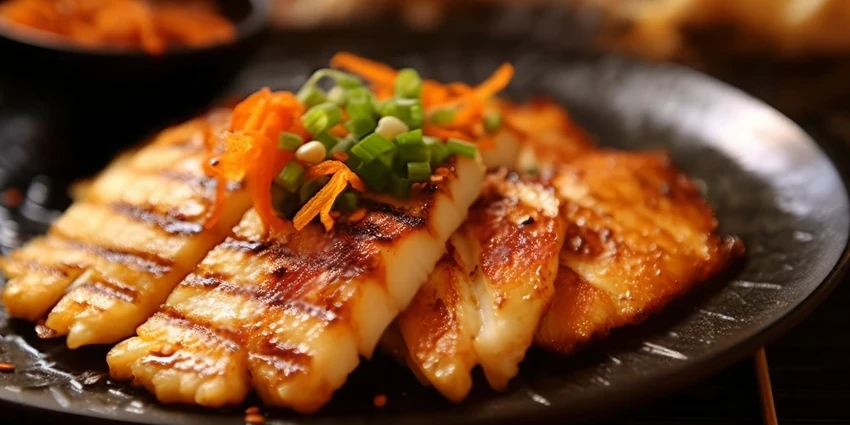All products were chosen independently by our editorial team. This review contains affiliate links and we may receive a commission for purchases made. Please read our affiliates FAQ page to find out more.
Jump to:
Can You Eat a Bowfin Fish?
Yes, you can eat bowfin fish, also known as “choupique” or “mudfish.” However, their taste is often considered strong and may vary. In some regions, bowfin is consumed smoked, fried, or in stews. Always ensure the fish comes from clean waters, as they can be found in diverse habitats.
Key Takeaways:
- Bowfin Fish Overview: Understand the basics of bowfin fish, including their history and habitat.
- Edibility and Safety: Explore the general edibility, nutritional value, and health concerns of bowfin fish.
- Preparing and Cooking: Learn detailed steps for cleaning, filleting, and various cooking methods of bowfin.
- Fishing Techniques: Insights into techniques and equipment for catching bowfin.
- Ecosystem Role: The ecological importance and common misconceptions about bowfin.
Introduction to Bowfin Fish
The bowfin fish, scientifically known as Amia calva, is a unique freshwater species native to North America. With a prehistoric lineage dating back millions of years, these fish are known for their distinct appearance and resilience in various aquatic environments. Bowfin fish are often found in slow-moving rivers, lakes, and swamps, stretching from Canada to Florida and west into Texas.
Habitat and Historical Significance
Where Does the Bowfin Live?
Bowfin prefer habitats with abundant vegetation, which provide both cover and feeding grounds. They thrive in a range of water conditions, from murky swamps to clear streams, showing remarkable adaptability.
A Look Back in Time
Bowfin have a rich evolutionary history, being one of the few surviving species from the Jurassic period. Their unique biology, including a lung-like gas bladder allowing them to breathe air, is a testament to their ancient lineage.
Edibility of Bowfin Fish
General Edibility and Safety
Bowfin fish are indeed edible, although they are not as popular as other freshwater fish like bass or trout. They provide a good source of protein and are low in fat and calories. However, concerns about mercury levels and potential food poisoning are prevalent.
Nutritional Value and Health Benefits
Bowfin are rich in omega-3 fatty acids, vitamin D, and vitamin B12, making them a nutritious choice. The fish’s low mercury content compared to other predatory fish makes it a safer option for those concerned about heavy metal consumption.
Health Concerns: Mercury and Food Poisoning
While bowfin are generally safe to eat, caution is advised regarding mercury levels and the risk of foodborne illnesses. It’s important to source bowfin from clean waters and ensure proper handling and cooking.
Preparing and Cooking Bowfin Fish
Fresh Preparation is Key
Bowfin flesh deteriorates quickly, so it’s essential to eat them fresh. The meat can become soggy or develop a muddy flavor if not handled correctly.
Cleaning and Filleting Bowfin
The process of cleaning and filleting bowfin is straightforward but requires attention to detail to ensure the best taste. The main steps include:
- Keeping the fish alive as long as possible before filleting.
- Cleaning the fish immediately after catching to maintain flesh quality.
- Filleting the fish carefully to maximize meat yield and minimize waste.
Cooking Methods
There are various ways to cook bowfin, including frying, grilling, and baking. Each method offers a different flavor profile and texture, making bowfin a versatile ingredient in many culinary preparations.
Table: Nutritional Profile of Bowfin Fish
| Nutrient | Amount per 100g |
| Protein | 17.7g |
| Fat | 0.8g |
| Calories | 80 kcal |
| Omega-3 Fatty Acids | High |
| Mercury Level | Low Compared to Other Predatory Fish |
Cooking Bowfin: Recipes and Techniques
Frying Bowfin
- Simple yet delicious, frying bowfin in oil or butter enhances its flavor. Season with salt, pepper, and other spices for a tasty meal.
Grilling Bowfin
- Marinate bowfin fillets in herbs and spices, then grill over high heat for a crispy, flavorful dish.
Baking Bowfin
- Season and wrap bowfin fillets in foil or parchment paper, then bake to enjoy a tender, flaky meal.
The Importance of Proper Seasoning
- Seasoning plays a crucial role in bringing out the best flavors of bowfin. Experiment with various herbs and spices to find the perfect blend for your taste.

Table: Popular Seasonings for Bowfin
| Seasoning Type | Examples |
| Herbs | Basil, Thyme, Dill |
| Spices | Paprika, Garlic Powder, Black Pepper |
| Marinades | Lemon Juice, Olive Oil, Soy Sauce |
Fishing for Bowfin
Bowfin as a Sportfish
Bowfin, known for their fighting spirit, are a favorite among sport fishermen. They are challenging to catch due to their strength and agility.
Techniques for Catching Bowfin
- Use live bait like nightcrawlers or minnows for best results.
- Fishing in areas with abundant vegetation increases chances of catching bowfin.
- Be prepared for a vigorous battle when hooking a bowfin.
Equipment for Bowfin Fishing
- Strong, sharp hooks are essential due to bowfin’s tough jaw.
- A steel leader is recommended to prevent line cuts.
- Use heavy rigs and braided lines for better control.
Bowfin in the Ecosystem
Ecological Role of Bowfin
Bowfin play a significant role in maintaining balance in their habitats. They are top predators, controlling populations of smaller fish and other aquatic creatures.
Common Misconceptions
Despite their importance in the ecosystem, bowfin are often misunderstood and undervalued. They are sometimes mistaken for invasive species like snakeheads, leading to unnecessary killing.
Possible Health Risks of Eating Bowfin Fish
Mercury in Bowfin Fish
While bowfin are generally low in mercury compared to other predatory fish, it’s still important to be aware of potential risks. The EPA advises caution, especially for pregnant women and children, when consuming fish known to have mercury.
Food Poisoning Risks
The risk of foodborne illnesses is present with any raw or undercooked fish. Proper handling and cooking are essential to reduce the risk of bacteria and parasites like Listeria or Vibrio.
Table: Health Risks Associated with Bowfin Fish
| Health Risk | Description and Precaution |
| Mercury Exposure | Lower than many predatory fish but caution is advised for high-risk groups |
| Foodborne Illnesses | Proper cleaning, handling, and cooking can mitigate risks |
Bowfin Fish in North American Waters
Distribution and Habitat
Bowfin are primarily found in the eastern part of North America, from Canada through Florida, thriving in freshwater environments like rivers and lakes. They are particularly common in the Mississippi, Missouri, and Ohio river basins.
Fishing for Bowfin
Despite their reputation as tough fighters, bowfin fishing can be highly rewarding. Effective techniques include using live bait and targeting areas with dense vegetation.
Conservation and Ethical Considerations
While bowfin are not endangered, responsible fishing practices are essential to maintain ecological balance. Anglers are encouraged to respect local regulations and release non-target catches.
Register for our latest in-depth reviews and product round-ups from the experts
Enter your email address below to receive our twice monthly reviews emails.
By entering your details, you are agreeing to our terms and conditions and privacy policy. You can unsubscribe at any time.
Frequently Asked Questions
Yes, when properly cooked, bowfin fish are safe to eat. They are low in mercury and offer nutritional benefits, but care should be taken in preparation to avoid foodborne illnesses.
Bowfin can have a strong, fishy taste. However, when prepared correctly, they offer a mild flavor similar to other freshwater fish.
Absolutely! Bowfin can be grilled, baked, or fried, with the right seasoning making a significant difference in flavor.
While not widely known as a delicacy, bowfin is considered a valuable food source in certain regions and offers a unique culinary experience.
Table: Bowfin Fish FAQs
| FAQ | Answer |
| Edibility | Safe when cooked properly |
| Taste | Strong but can be mild with correct preparation |
| Cooking Methods | Versatile: grilling, baking, frying |
| Delicacy Status | Not a common delicacy but valued in some areas |
Martin Cochran, renowned for his expertise in deep-sea fishing and marine wildlife, plays a pivotal role at Fresh Catch Daily. His adventures across various oceans have equipped him with unique insights and techniques, enriching our platform with diverse and engaging content for fishing enthusiasts.










